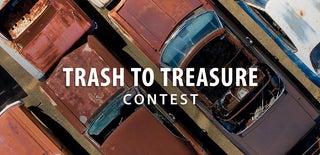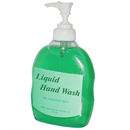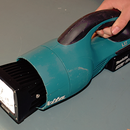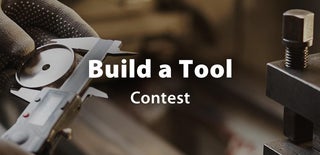Introduction: Refillable WD40 From Junk
I go through a lot of spray on lubricants, and they always run out, or the can loses its pressure, when the shops are shut.
I looked at my latest can that had no pressure and a saw an disposable fire extinguisher in the bin and had an idea, combine the two and make something useful.
You can fill the can with what ever you want and pressurize it with a compressor or bike pump. You can buy WD40 in a 20 liter can if you want, but for undoing rusty bolts or lubing squeaky things I use biodiesel.
Step 1: What You Need
You don't need much,
- An old empty fire extinguisher (the one i use is not able to be refilled as it is disposable)
- An empty can of your favorite lubricant
- A Schrader valve from a bike tube or car tire
- Some basic hand tools and solder
- A tool to remove the core from the Schrader valve
Step 2: Prepare Your Schrader Valve
The valve I used was also junk it was remove from a car wheel, when the tire was changed. You will have to remove the rubber with a sharp knife and I found the last of it could be removed by putting it in a cordless drill and sanding it off.
If the valve still has the core inside it it will also need to be removed before soldering as the heat will damage it. There is a special tool to do this.
Step 3: Remove the Gauge and Fit the Valve
Next on the list is removing the gauge, fitting the valve.
- The gauge is very tight but will unscrew (the extinguisher is empty right?)
- The gauge can then be pried off the fitting
- Drill the fitting out to accept the Schrader valve I used a 5.5 mm drill yours may be a different size I used a lathe to do this but you could drill it out with a drill if you don't have access to a lathe
- Make sure everything is clean as solder will not stick to dirt or oxidized metal
- Solder the valve to the fitting
- Cut off any excess so the fitting seats properly when screw back in
- The valve can then be fitted to the extinguisher
- The core can now be fitted
Step 4: Harvesting the WD40 Can
First on my list is the cool bendy nozzle hose pipe thing on the WD40, I found that it kind of unscrewed, just twist it and it came right out.
- Next remove the nozzle from the fire extinguisher it just unscrews
- I drilled out the nozzle to accept the bendy nozzle, 3.2mm drill
- I also cut the end of the nozzle off, but it would probably be better just to fill up the cavity with silicon after the bendy nozzle is glued in
- Super glue the bendy nozzle hose into the fire extinguisher nozzle, and refit to the extinguisher.
Step 5: Saftey and Packaging.
When I asked the fire extinguisher service guy about refilling the cylinder, he pretty much said it was not a problem but you must make the extinguisher look like something that could not be mistaken for and extinguisher.
In an emergency people do some silly things so it needs to at lest have the label removed and painted any color but red.
- The top unscrews from the cylinder (make sure its empty first)
- The label can be remove by heating the cylinder up, it softens the glue and can be pealed off.
- I sanded the paint with scotch bright and painted it blue.
- The (empty) WD40 can had the ends cut off with tin snips then cut up the middle.
- I cleaned the inside of the can of any oil, then slid it on the cylinder glued it to stop it coming off.
Step 6: How to Fill and Use
To fill it up you just unscrew the to and about 1/2 fill with your choice of penetrating oil or diesel, you can buy WD40 in a drum if you want, or mix up your own secret sauce
Screw the to back on and pump it up with a compressor or bike pump, I found about 30psi was more than enough pressure, to blast those rusty bolts.

Runner Up in the
Trash to Treasure Contest













